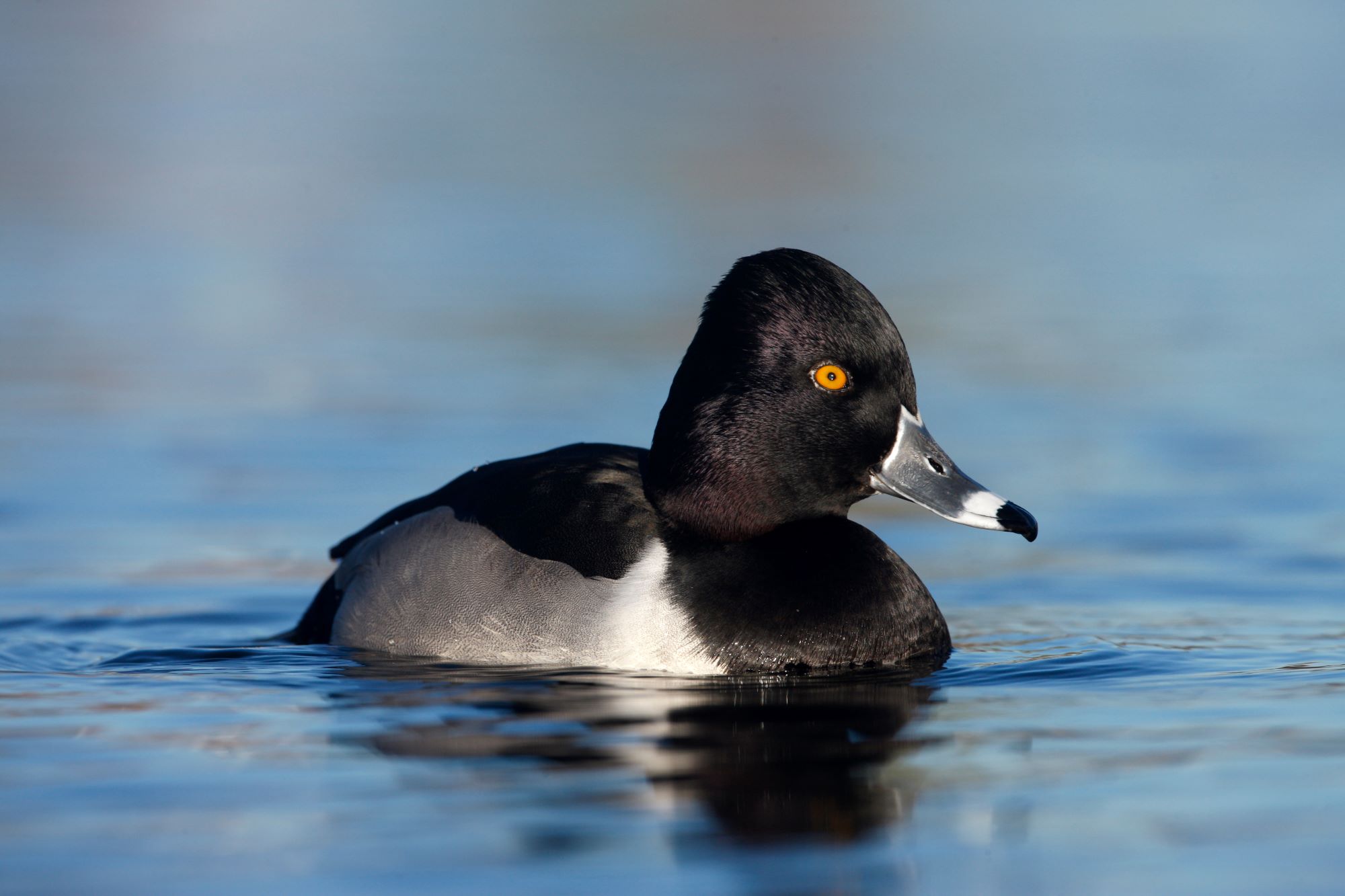
Ring-Necked Ducks in Utah
Ring-necked Ducks, a captivating species of waterfowl, grace Utah's water bodies primarily in the winter months, offering a seasonal spectacle for birdwatchers and nature enthusiasts. Although they breed further north in North America, these ducks choose Utah's diverse aquatic habitats as their wintering grounds, making the state's lakes, reservoirs, and wetlands their temporary home. The males, with their striking black-and-white plumage, glossy black heads, and distinctive white ring around the bill, provide a vivid contrast against the often-muted winter landscapes. The subtler brown females, with their characteristic white eye-ring and bill ring, complement their male counterparts, adding to the visual appeal of the flocks.
During their stay in Utah, Ring-necked Ducks adapt to the local conditions, often congregating in open waters where they dive for food. Their diet in winter consists mainly of aquatic vegetation and seeds, but they will also forage for invertebrates and small fish when available. Utah's wetlands and water bodies, rich in food resources, provide ideal conditions for these ducks to thrive during the colder months. The ducks' diving behavior is a common sight in these areas, as they frequently submerge to forage, sometimes disappearing underwater for several seconds before resurfacing.
Ring-necked Ducks are gregarious in nature, often found in flocks that can range from a few individuals to several hundreds. In Utah, they are commonly seen mingling with other species of diving ducks, creating diverse and dynamic waterfowl communities. Their presence in these habitats contributes to the ecological diversity and vitality of the state's wetlands, supporting a complex web of life. The flocks of Ring-necked Ducks are particularly a draw for birdwatchers, as they provide excellent opportunities for observation and photography, especially in areas where the ducks are accustomed to human presence.
While Utah's climate and geography do not support the breeding habits of Ring-necked Ducks, the state plays a crucial role in their annual life cycle by providing a safe and nourishing winter refuge. The conservation and maintenance of healthy wetland and aquatic ecosystems in Utah are vital for the continued wintering of these ducks. Efforts to protect and restore these habitats not only benefit Ring-necked Ducks but also a wide range of other migratory and resident wildlife species.
In summary, the winter presence of Ring-necked Ducks in Utah is a seasonal highlight, showcasing the state's role in the broader migratory patterns of North American waterfowl. Their arrival adds vibrancy to the winter landscape, offering a glimpse into the migratory behaviors of waterfowl and the importance of Utah's aquatic ecosystems as crucial habitats for wildlife. For those who venture to the state's lakes and wetlands during the winter months, the Ring-necked Ducks provide a charming and lively display, further enhancing Utah's reputation as a haven for diverse wildlife and a destination for nature lovers.